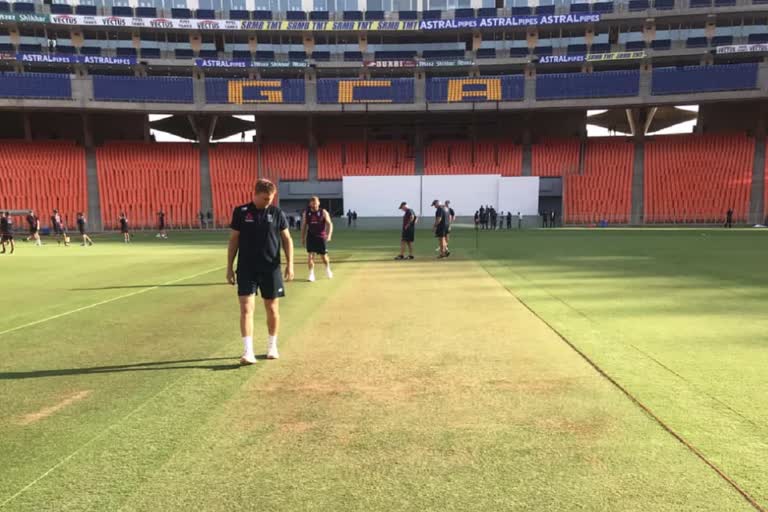Ahmedabad: The pitch for the third Test here at the colossal and grand Motera stadium looked more like a construction site with puffs of dust rising, and the surface crumbling at both batting ends, even though the five-day pink ball Test was barely into its second day.
The ground-staff was summoned onto the pitch in only the fifth over of the second day's play and again later to sweep the dust created around the bowlers' footholds.
The surface had also required regular sweeping on the first day. At one end, the Reliance End, the footholds weren't firm creating trouble for fast bowlers' landing even in the first session of the first day, forcing Axar Patel to be pressed into the attack early on.
This isn't the first time pitches have behaved in such a way in India's home Tests. In November 2004 in Mumbai, a Rahul Dravid-led India had succumbed to Michael Clarke's left-arm spin. Clarke took six wickets as India were bowled out for 205 to give Australia a target of 107 in fourth innings. India, though won the Test on the back of Harbhajan Singh's five-wicket haul as the Aussies were bowled out for 93.
Also Read: 3rd Test: Dominant India crush England by 10 wickets inside 2 days
However, the area around the two batting ends being dry, crumbling and dusty and especially on pitches that haven't been used, is surprising.
Due to Covid-19, Chennai's MA Chidambaram Stadium didn't get to host any match for about 10 months. The Motera stadium has been built from scratch with a completely new wicket.
"Usually, the area around the batting ends [of a pitch] has little grass because of the matches that are played on it round the year. So, you have to prepare well. There are various methods, like how you roll among others," explains Daljeet Singh, former head of the pitches and grounds committee.
